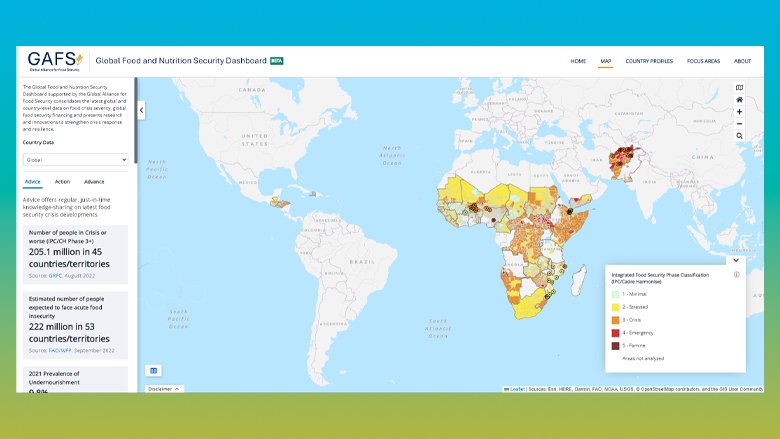Based on the 1996 World Food Summit, food security is defined when all people, at all times, have physical and economic access to sufficient safe and nutritious food that meets their dietary needs and food preferences for an active and healthy life.
The four main dimensions of food security:
- Physical availability of food: Food availability addresses the “supply side” of food security and is determined by the level of food production, stock levels and net trade.
- Economic and physical access to food: An adequate supply of food at the national or international level does not in itself guarantee household level food security. Concerns about insufficient food access have resulted in a greater policy focus on incomes, expenditure, markets and prices in achieving food security objectives.
- Food utilization: Utilization is commonly understood as the way the body makes the most of various nutrients in the food. Sufficient energy and nutrient intake by individuals are the result of good care and feeding practices, food preparation, diversity of the diet and intra-household distribution of food. Combined with good biological utilization of food consumed, this determines the nutritional status of individuals.
- Stability of the other three dimensions over time: Even if your food intake is adequate today, you are still considered to be food insecure if you have inadequate access to food on a periodic basis, risking a deterioration of your nutritional status. Adverse weather conditions, political instability, or economic factors (unemployment, rising food prices) may have an impact on your food security status.
For food security objectives to be realized, all four dimensions must be fulfilled simultaneously.
Strategy
The World Bank Group works with partners to build food systems that can feed everyone, everywhere, every day by tacklng food insecurity, promoting ‘nutrition-sensitive agriculture’ and improving food safety. The Bank is a leading financier of food systems.
Activities include:
- Strengthening safety nets to ensure that vulnerable families have access to food and water–and money in their pockets to make vital purchases
- Delivering expedited emergency support by fast-tracking financing through existing projects to respond to crisis situations
- Engaging with countries and development partners to address food insecurity. Instruments include rapid country diagnostics and data-based monitoring instruments and partnerships such as the Famine Action Mechanism and the Agriculture Observatory
- Promoting farming systems that use climate-smart techniques, and produce a more diverse mix of foods, to improve food systems’ resilience, increase farm incomes and enable greater availability and affordability of nutrient-dense foods
- Improving supply chains to reduce post-harvest food losses, improve hygiene in food distribution channels, and better link production and consumption centers
- Applying an integrated “One Health” approach to managing risks associated with animal, human and environmental health
- Supporting investments in research and development that enable increasing the micronutrient content of foods and raw materials
- Advocating for policy and regulatory reforms to improve the efficiency and integration of domestic food markets and reduce barriers to food trade
- Working with the private sector, government, scientists, and others to strengthen capacities to assess and manage food safety risks in low and middle-income countries
- Supporting long-term global programs to address food insecurity: The Bank houses the Global Agriculture and Food Security Program (GAFSP), a global financing instrument that pools donor funds and targets additional, complementary financing to agricultural development across the entire value chain. Since its launch in 2010 by the G20 in response to the 2007-2008 food price crisis, GAFSP has reached over 13 million smallholder farmers and their families with over $1.3 billion in grant funding to 64 projects in 39 countries, $330 million to 66 agribusiness investment projects in 27 countries, and $13.2 million in small-scale grants to support producer organizations. Most recently, in response to the ongoing COVID-19 pandemic, GAFSP allocated over $55 million of additional grant funding to on-going public sector and producer organization-led projects to support COVID-19 response and recovery.
- The Bank also supports the CGIAR which advances agriculture science and innovation to boost food and nutrition security globally.
